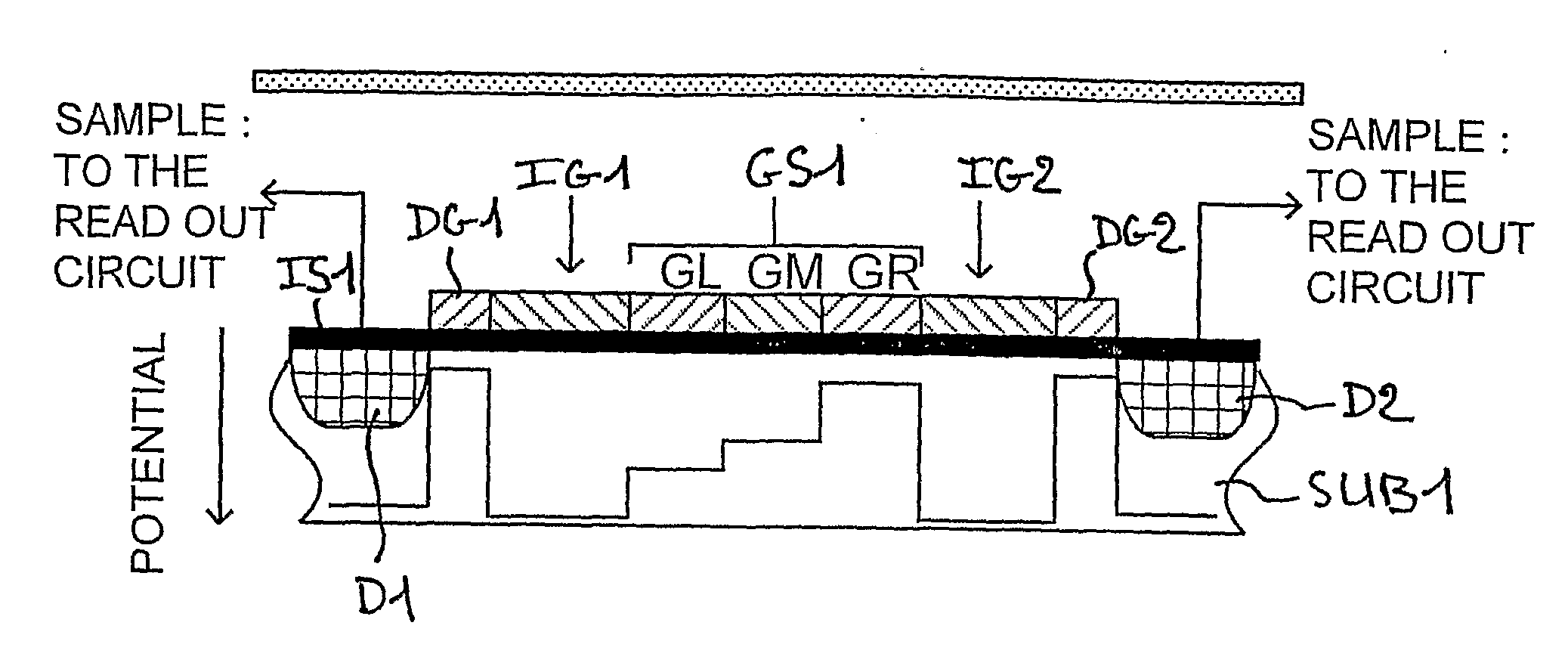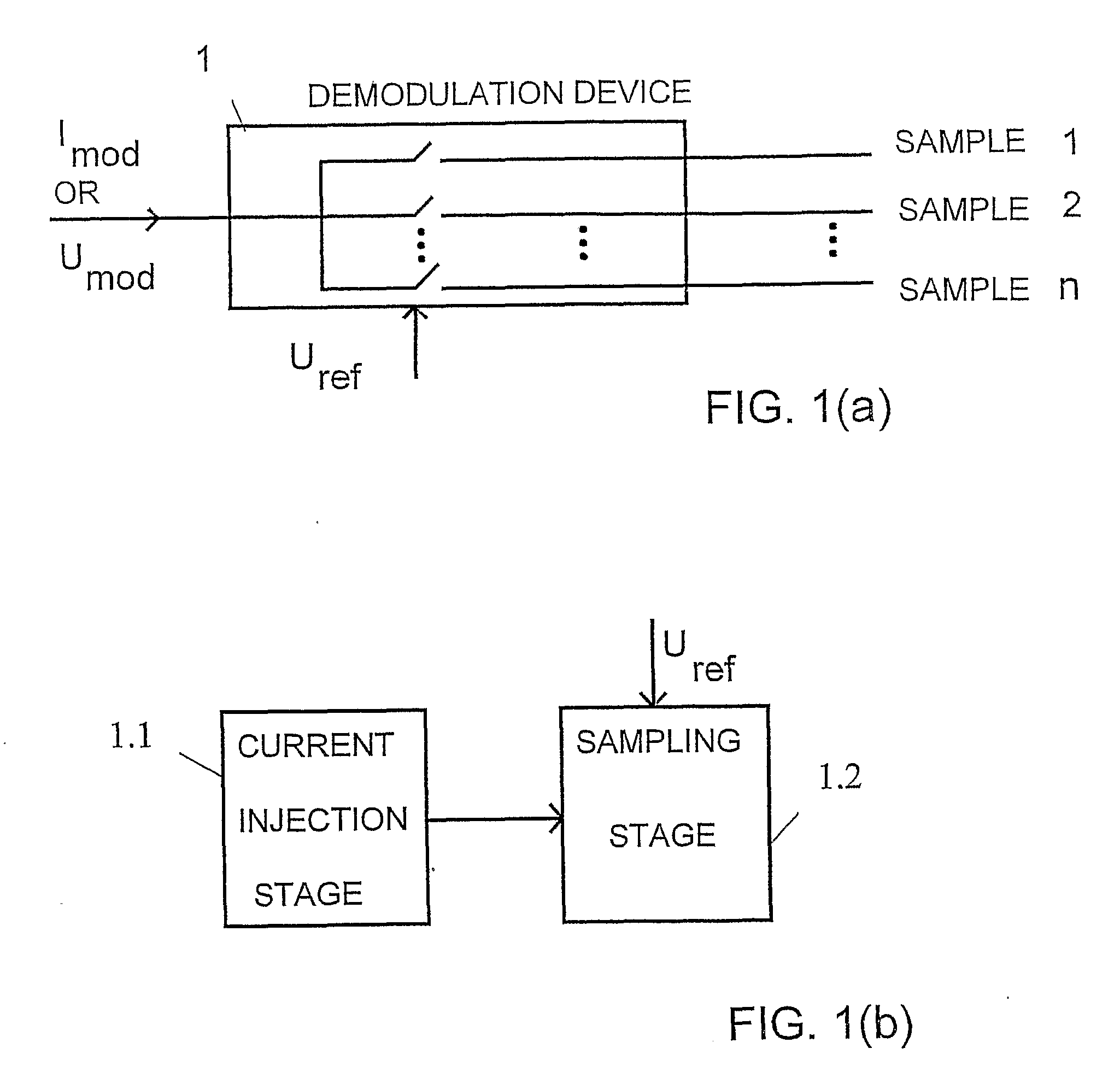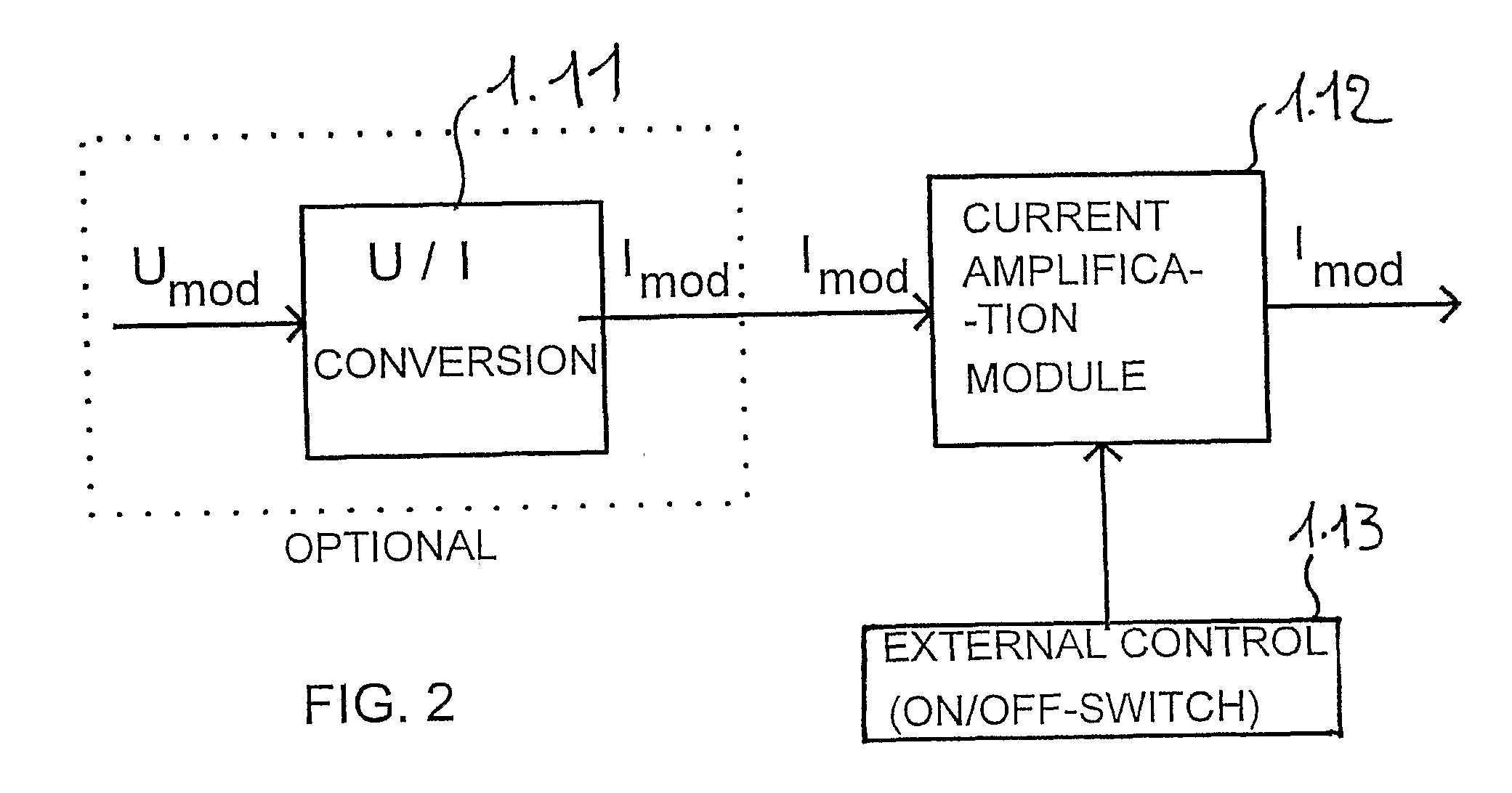Device and Method for the Demodulation of Modulated Electric Signals
- Summary
- Abstract
- Description
- Claims
- Application Information
AI Technical Summary
Benefits of technology
Problems solved by technology
Method used
Image
Examples
first embodiment
[0050]the sample output stage 1.23 is shown in FIG. 4(a). The sample output stage comprises an accumulation module 1.230 and a charge-voltage converter 1.231. The accumulation module 1.230 is for example a capacitor which integrates the sample current. The integrated charge carriers induce a potential drop over the capacitor that can be read out by a further electronic circuit 1.231. Generally, additional amplification circuits such as e.g. a source follower are foreseen in order to drive the following analogue-to-digital converter circuit or any other electronics not shown in FIG. 4(a).
[0051]The second embodiment of the sample output stage 1.23 is detailed in FIG. 4(b). The sample output stage 1.23 comprises a direct current-voltage converter 1.235 aims at a direct conversion of the sample currents Isample_1, . . . Isample_n into corresponding sample voltages Usample_1, . . . Usample_n. As the accumulation module 1.230 of FIG. 4(a) is not provided in this embodiment, the sample out...
second embodiment
[0064]FIG. 8 shows preferred embodiments of the current-injection stage 1.1 of FIG. 1(b) linked to the sampling stage 1.2 through its injection node IN. In all four FIGS. 8(a)-(d), the modulated current Imod is mirrored using, e.g., the known electronic circuit consisting of two transistors called current mirror. The current Imod is thus amplified using this current-mirror circuit. The mirrored current is used as injection current to the sampling stage 1.2. A switch S controls the duration of current injection into the sampling stage. This switch corresponds to the external control 1.13 of FIG. 2. The switch S can be formed by one single transistor or a transmission gate. FIG. 8(b) illustrates particularly the conversion of the modulated voltage signal Umod into a modulated reference current Iref that is injected into the sampling stage 1.2. The voltage-to-current conversion is done using e.g. a condensator C. FIG. 8(c) illustrates the voltage-to-current conversion Umod into Iref. F...
PUM
 Login to View More
Login to View More Abstract
Description
Claims
Application Information
 Login to View More
Login to View More - R&D
- Intellectual Property
- Life Sciences
- Materials
- Tech Scout
- Unparalleled Data Quality
- Higher Quality Content
- 60% Fewer Hallucinations
Browse by: Latest US Patents, China's latest patents, Technical Efficacy Thesaurus, Application Domain, Technology Topic, Popular Technical Reports.
© 2025 PatSnap. All rights reserved.Legal|Privacy policy|Modern Slavery Act Transparency Statement|Sitemap|About US| Contact US: help@patsnap.com



